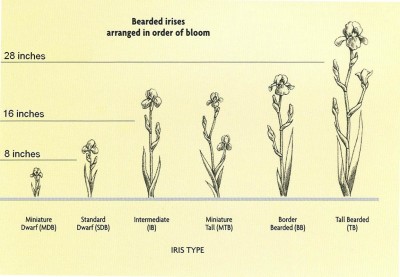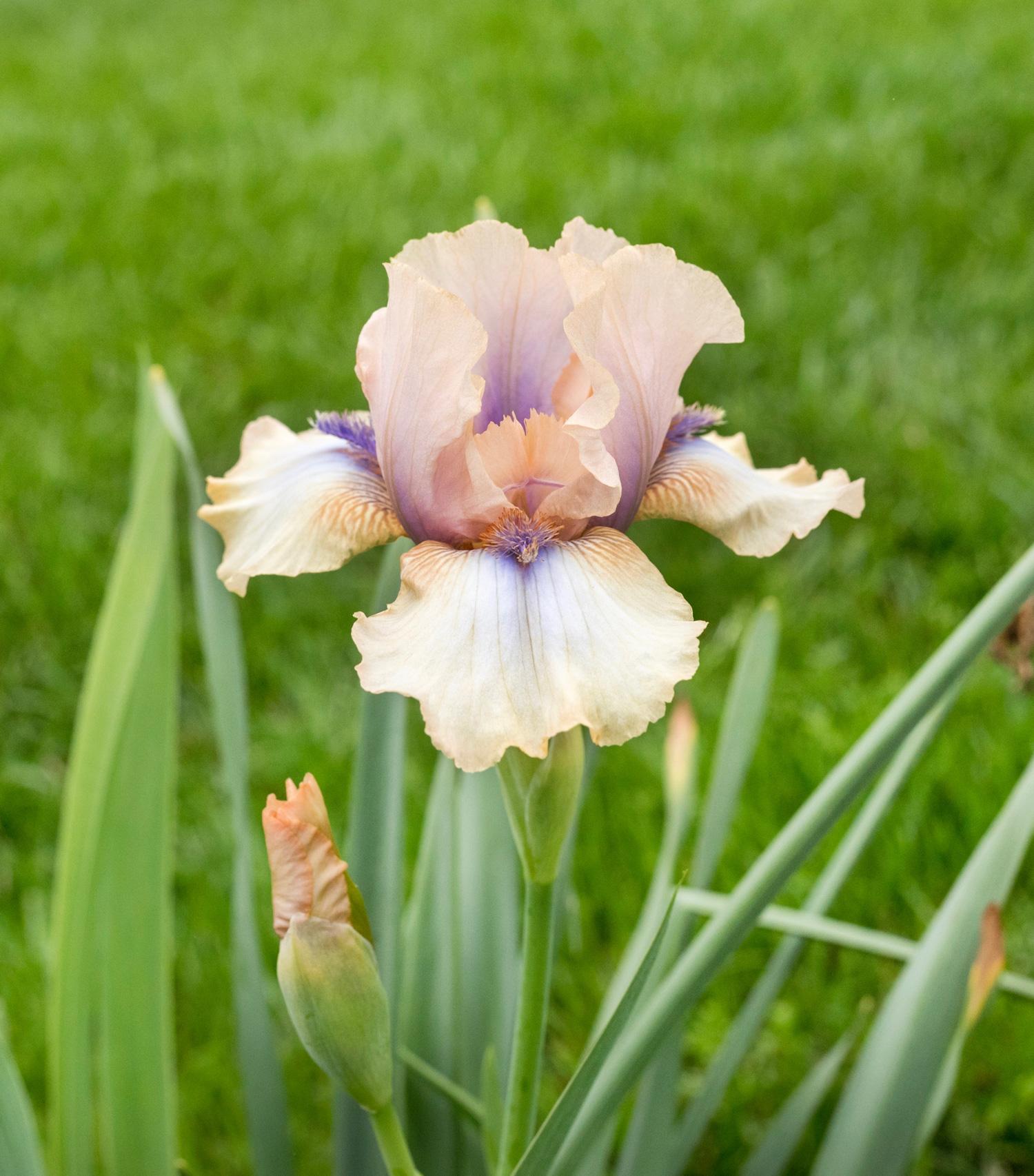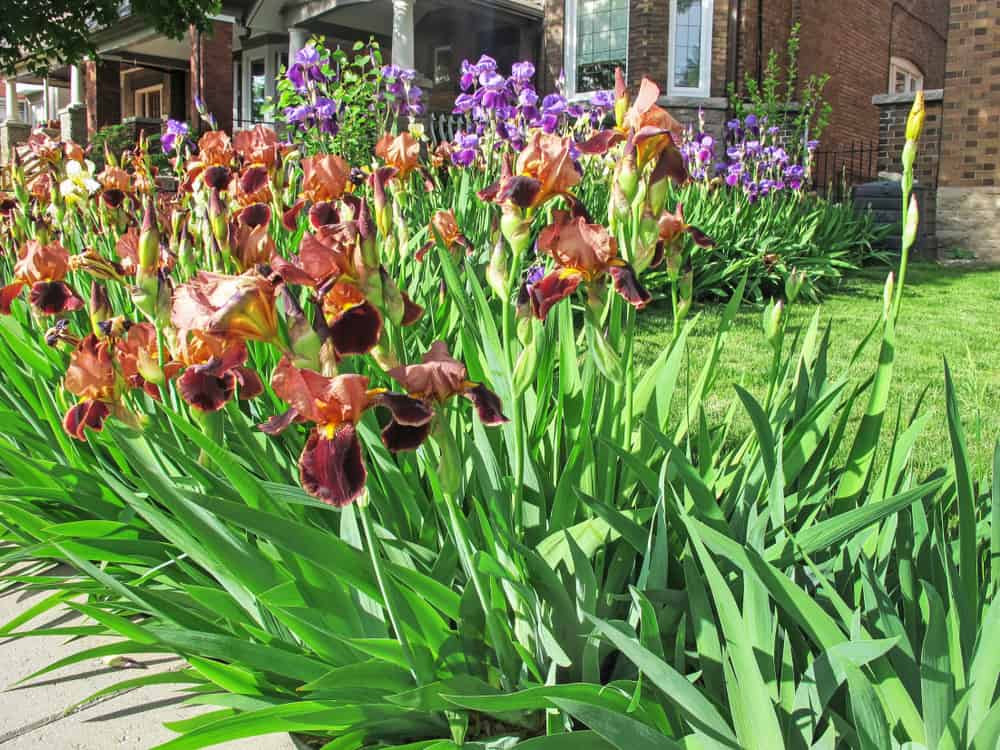Understanding Iris Plant Development: A Key to Successful Blooming
When growing irises, it’s essential to understand the plant’s development to achieve successful blooming. Many gardeners wonder, “Do iris bloom the first year?” The answer lies in the stages of iris growth, from planting to maturity. Irises, like other plants, go through a series of developmental stages that ultimately lead to blooming.
The journey begins with planting, where the iris rhizome is introduced to its new environment. During the first growing season, the iris focuses on establishing a strong root system and developing its foliage. As the plant matures, it begins to produce flower stalks, which eventually bloom into beautiful, vibrant flowers. However, this process can take time, and gardeners may not see blooms in the first year.
Recognizing the different stages of growth is crucial for providing the necessary care and conditions for successful blooming. By understanding iris plant development, gardeners can tailor their care routine to meet the plant’s needs, ultimately increasing the chances of blooming in the first year. This knowledge is vital for gardeners who want to know, “Do iris bloom the first year?” and want to optimize their care routine for successful blooming.
Factors Affecting Iris Blooms: Climate, Soil, and Care
While understanding iris plant development is crucial, it’s equally important to recognize the various factors that influence iris blooming. Climate, soil quality, watering, and fertilization all play a significant role in determining whether irises will bloom in the first year. By optimizing these factors, gardeners can increase the chances of successful blooming.
Climate is a critical factor in iris blooming. Irises typically thrive in zones with moderate temperatures and adequate moisture. Gardeners in regions with extreme temperatures or drought may need to take extra precautions to ensure their irises receive the necessary care. Soil quality is another essential factor, as irises prefer well-draining soil with a pH between 6.0 and 7.0. Gardeners can improve soil quality by adding organic matter and ensuring proper drainage.
Watering and fertilization are also crucial for iris blooming. Irises require consistent moisture, especially during the first growing season. However, overwatering can be detrimental, so gardeners should monitor soil moisture levels carefully. Fertilization is also important, as irises benefit from regular feeding with a balanced fertilizer. By providing optimal care, gardeners can encourage iris blooming in the first year and set themselves up for success.
How to Encourage Iris Blooms in the First Year
To increase the chances of iris blooming in the first year, gardeners can employ several strategies. Proper planting is essential, as irises require well-draining soil and full sun to partial shade. Planting irises in the fall, about 6-8 weeks before the first frost, can also promote blooming in the first year.
Pruning is another crucial technique for encouraging iris blooms. Removing spent flowers, or deadheading, can stimulate the iris to produce more blooms. Additionally, trimming back the foliage to about 6 inches after blooming can help the iris conserve energy and promote healthy growth.
Dividing and replanting irises can also encourage blooming in the first year. This process should be done every 3-4 years to maintain the health and vigor of the iris. By dividing and replanting, gardeners can increase the chances of blooming and promote healthy growth.
While it’s possible to encourage iris blooms in the first year, it’s essential to remember that not all irises will bloom immediately. Some varieties may take longer to mature, and gardeners should be patient and not expect immediate results. By following these tips and providing optimal care, gardeners can increase the chances of successful blooming and enjoy the beauty of their irises for years to come. After all, the question “do iris bloom the first year” can be answered with a resounding “yes” with proper care and attention.
The Role of Iris Variety in First-Year Blooming
The type of iris variety can significantly impact blooming in the first year. Different iris varieties have unique characteristics, growth habits, and blooming patterns that can affect their performance in the first year. For instance, bearded irises, which are one of the most popular varieties, tend to bloom more readily in the first year than Japanese irises.
Some iris varieties, such as reblooming irises, are bred to bloom multiple times in a growing season, increasing the chances of blooming in the first year. These varieties often require more maintenance, such as regular deadheading and fertilization, to promote repeat blooming.
Other factors, such as the age of the iris rhizome and the quality of the planting material, can also influence first-year blooming. Gardeners should choose high-quality iris rhizomes from reputable suppliers to increase the chances of successful blooming.
While some iris varieties may not bloom in the first year, it’s essential to remember that this doesn’t necessarily mean they won’t bloom at all. With proper care and patience, many irises will eventually bloom, and the question “do iris bloom the first year” can be answered with a resounding “yes” for many varieties.
By understanding the characteristics of different iris varieties and their blooming habits, gardeners can make informed decisions when selecting irises for their gardens and increase the chances of successful blooming in the first year.
Common Challenges and Solutions for First-Year Iris Blooms
Despite proper care and attention, iris blooms in the first year can be affected by various challenges. Pests, diseases, and nutrient deficiencies are common issues that can prevent or limit blooming. For instance, iris borers, slugs, and snails can damage the rhizome and foliage, reducing the chances of blooming.
To prevent pest damage, gardeners can use organic pest control methods, such as introducing beneficial insects or using neem oil. Regularly inspecting the plants and removing any infested or damaged tissue can also help prevent the spread of pests.
Diseases, such as iris leaf spot and root rot, can also impact blooming in the first year. These diseases are often caused by overwatering, poor drainage, or high humidity. To prevent diseases, gardeners should ensure good air circulation, water carefully, and remove any infected plant material.
Nutrient deficiencies, particularly a lack of phosphorus, can also limit blooming in the first year. Gardeners can address this by using a balanced fertilizer that is high in phosphorus, promoting healthy root growth and blooming.
By being aware of these common challenges and taking preventative measures, gardeners can increase the chances of successful blooming in the first year. Remember, even if irises don’t bloom immediately, with proper care and attention, they can still thrive and provide beautiful blooms in the future, answering the question “do iris bloom the first year” with a resounding “yes” in many cases.
What to Expect from Iris Blooms in the First Year: A Realistic Perspective
When it comes to iris blooms in the first year, it’s essential to have realistic expectations. While some irises may bloom profusely in the first year, others may not bloom at all. Factors such as the type of iris, climate, soil quality, and care can all impact blooming in the first year.
In general, bearded irises are more likely to bloom in the first year than Japanese irises. However, even with bearded irises, blooming in the first year is not guaranteed. It’s not uncommon for irises to take a year or two to establish themselves before producing blooms.
So, what can you expect from iris blooms in the first year? In the best-case scenario, you may get a few blooms, but they may not be as profuse or vibrant as those in subsequent years. In some cases, you may not get any blooms at all. This doesn’t necessarily mean that your irises are not healthy or that you’ve done anything wrong – it’s simply a normal part of the iris growth cycle.
To improve your chances of getting blooms in the first year, make sure to provide your irises with optimal growing conditions, including full sun, well-draining soil, and regular watering and fertilization. By doing so, you’ll be giving your irises the best possible start in life, and increasing the chances of successful blooming in the first year and beyond, answering the question “do iris bloom the first year” with a resounding “maybe”, but with the potential for a “yes” with proper care.
Optimizing Iris Care for Future Blooms
To ensure continued blooming success, it’s essential to provide optimal care for your irises beyond the first year. This includes preparing the soil, pruning, and dividing irises to promote healthy growth and blooming.
Soil preparation is critical for future blooming. Add organic matter such as compost or well-rotted manure to the soil to improve its structure and fertility. This will help to promote healthy root growth, which is essential for blooming.
Pruning is another crucial aspect of iris care. After the blooming season, remove the flower stalks to encourage the iris to focus its energy on re-growing and storing energy for next year’s blooms. Cut back the foliage to within 6 inches of the ground to help the iris conserve energy and reduce the risk of disease.
Dividing irises is also an essential part of their care. Irises typically need to be divided every 3-4 years to maintain their health and promote blooming. Dig up the entire clump, gently wash the soil away, and separate the individual rhizomes. Replant the divisions in well-draining soil, making sure to water them well.
By following these tips, you can ensure that your irises continue to thrive and bloom beautifully in the years to come. Remember, with proper care and attention, irises can provide years of enjoyment and beauty in your garden, even if they don’t bloom in the first year, answering the question “do iris bloom the first year” with a resounding “maybe”, but with the potential for a “yes” with proper care.
Conclusion: Setting Yourself Up for Iris Blooming Success
In conclusion, understanding the intricacies of iris plant development, optimizing climate, soil, and care, and addressing common challenges are all crucial for achieving successful iris blooms in the first year and beyond. By following the practical advice and tips outlined in this article, you’ll be well on your way to unlocking the secrets of iris blooms and enjoying a vibrant and thriving iris garden.
Remember, patience and persistence are key when it comes to growing irises. Don’t be discouraged if your irises don’t bloom in the first year – with proper care and attention, they will eventually reward you with stunning blooms. And by optimizing your iris care for future blooms, you’ll be able to enjoy years of beautiful blooms and fragrance in your garden.
So, do iris bloom the first year? The answer is maybe, but with the right knowledge and care, you can increase your chances of success and enjoy a stunning iris display in your garden. By applying the knowledge and tips outlined in this article, you’ll be setting yourself up for iris blooming success and enjoying the beauty and fragrance of these magnificent flowers for years to come.








